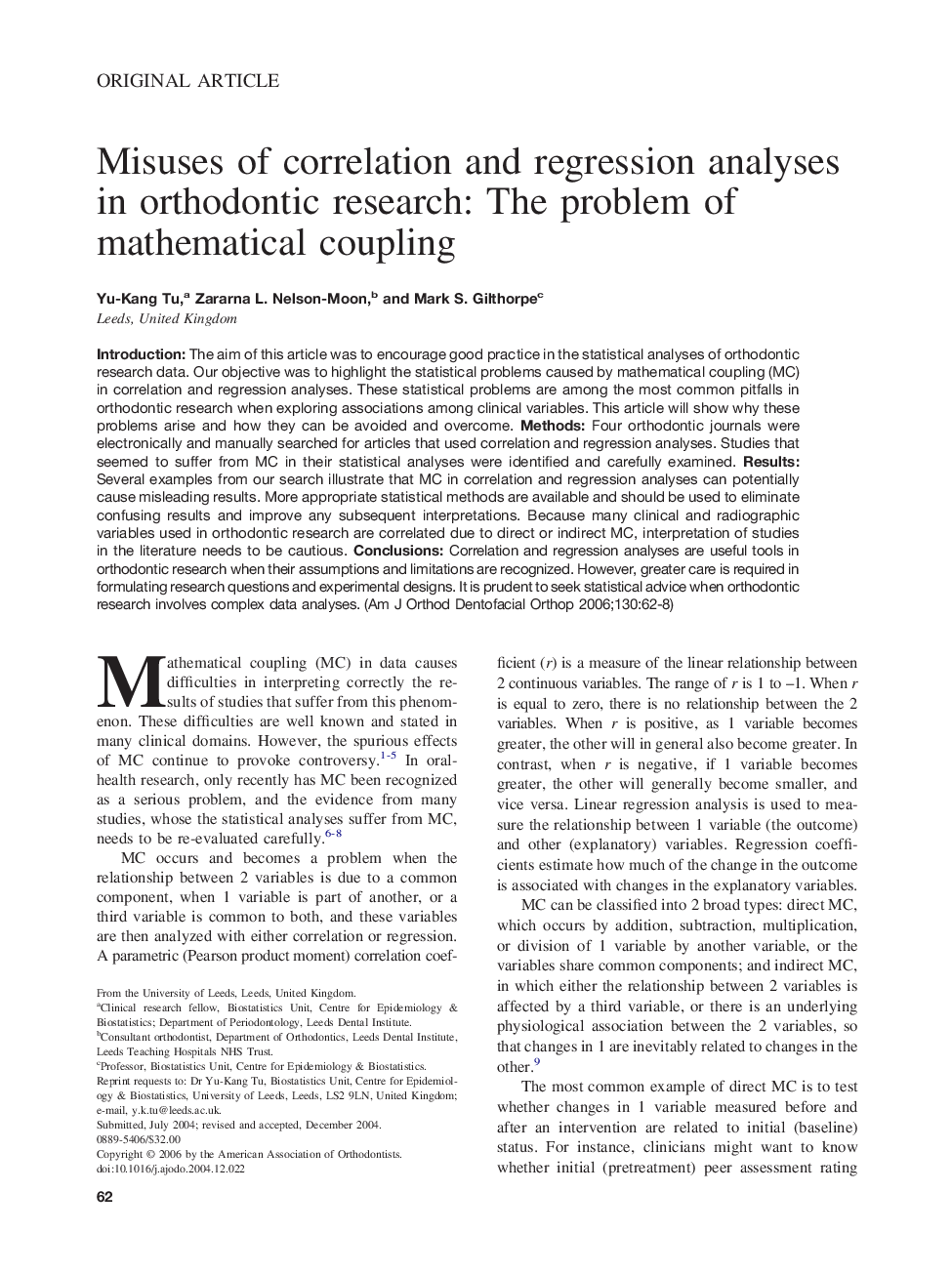| Article ID | Journal | Published Year | Pages | File Type |
|---|---|---|---|---|
| 3119007 | American Journal of Orthodontics and Dentofacial Orthopedics | 2006 | 7 Pages |
Introduction: The aim of this article was to encourage good practice in the statistical analyses of orthodontic research data. Our objective was to highlight the statistical problems caused by mathematical coupling (MC) in correlation and regression analyses. These statistical problems are among the most common pitfalls in orthodontic research when exploring associations among clinical variables. This article will show why these problems arise and how they can be avoided and overcome. Methods: Four orthodontic journals were electronically and manually searched for articles that used correlation and regression analyses. Studies that seemed to suffer from MC in their statistical analyses were identified and carefully examined. Results: Several examples from our search illustrate that MC in correlation and regression analyses can potentially cause misleading results. More appropriate statistical methods are available and should be used to eliminate confusing results and improve any subsequent interpretations. Because many clinical and radiographic variables used in orthodontic research are correlated due to direct or indirect MC, interpretation of studies in the literature needs to be cautious. Conclusions: Correlation and regression analyses are useful tools in orthodontic research when their assumptions and limitations are recognized. However, greater care is required in formulating research questions and experimental designs. It is prudent to seek statistical advice when orthodontic research involves complex data analyses.
